
Coral reefs off Java from the air. (428k)
Java was the second island of Indonesia that I visited on my trip. I stayed three days in Yogyakarta, then took the train to Surabaya to visit the volcano Mt. Bromo.
Around Yogyakarta are several very interesting temple complexes that are more than 1000 years old, including Candi Borobudur, Candi Prambanan, and Candi Sewu (Candi meaning temple in Indonesian). I also visited the active volcano Mount Merapi just outside of Yogyakarta. Mount Merapi is one of the most dangerous and active volcanoes in Indonesia. Mount Merapi has been witnessing small eruptions every two or three years, bigger ones every 10-15 years, and very large ones every 50-60 years.
Borobudur Temple Compounds and Prambanan Temple Compounds are UNESCO World Heritage Sites.
In the Yogyakarta I visited the Keraton Ngayogyakarta Hadiningrat (Sultan's Palace) and the Water Castle.
From the Mount Bromo entry in Wikipedia:
In East Java I visited Mount Bromo. Mount Bromo is an active volcano, part of the Tengger massif, in East Java, Indonesia. At 2,329 m (7,641 ft) it is not the highest peak of the massif, but is the most well known. The massif area is one of the most visited tourist attractions in East Java, Indonesia. The volcano belongs to the Bromo Tengger Semeru National Park. The name of Bromo derived from Javanese pronunciation of Brahma, the Hindu creator god. Mount Bromo sits in the middle of a plain called the "Sea of Sand" a protected nature reserve since 1919.
All pictures are © Dr. Günther Eichhorn, unless otherwise noted.








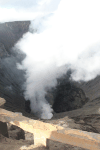





From the Borobudur entry in Wikipedia:
Candi Borobudur (Candi is Indonesian for temple) is a 9th century Mahayana Buddhist temple in Magelang, Central Java, Indonesia. It is the world's largest Buddhist temple, one of the greatest Buddhist monuments in the world. Borobudur Temple Compounds is a UNESCO World Heritage Site. It is said to hold a relic of the Buddha.
The temple consists of nine stacked platforms, six square and three circular, topped by a central dome. The temple is decorated with 2,672 relief panels and 504 Buddha statues. The central dome is surrounded by 72 Buddha statues, each seated inside a perforated stupa.
The temple was built in the 9th century during the reign of the Sailendra Dynasty. It was designed in Javanese Buddhist architecture, which blends the Indonesian indigenous cult of ancestor worship and the Buddhist concept of attaining Nirvana.
The temple demonstrates the influences of Gupta art that reflects India's influence on the region, yet there are enough indigenous scenes and elements incorporated to make Borobudur uniquely Indonesian. The monument is both a shrine to the Lord Buddha and a place for Buddhist pilgrimage. The journey for pilgrims begins at the base of the monument and follows a path around the monument and ascends to the top through three levels symbolic of Buddhist cosmology: Kāmadhātu (the world of desire), Rupadhatu (the world of forms) and Arupadhatu (the world of formlessness). The monument guides pilgrims through an extensive system of stairways and corridors with 1,460 narrative relief panels on the walls and the balustrades. Borobudur has the largest and most complete ensemble of Buddhist reliefs in the world.
Evidence suggests Borobudur was constructed in the 9th century and abandoned following the 14th century decline of Hindu kingdoms in Java and the Javanese conversion to Islam.


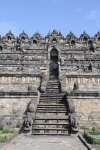

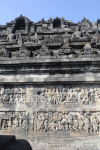

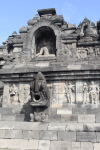








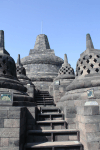



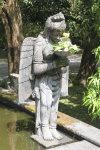
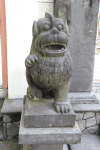
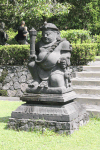




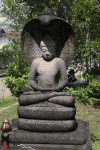


From the Mendut entry in Wikipedia:
Candi Mendut is a 9th century Buddhist temple, located in Mendut village, Mungkid sub-district, Magelang Regency, Central Java, Indonesia. The temple is located about 3 km (1.9 miles) east from Borobudur. Mendut, Borobudur and Pawon, all of which are Buddhist temples, are located in one straight line. There is a mutual religious relationship between the three temples, although the exact ritual process is unknown.

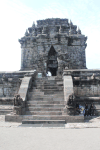

From the Pawon entry in Wikipedia:
Candi Pawon is a Buddhist temple in Central Java, Indonesia. Located between two other Buddhist temples, Borobudur (1.75 km (1.09 miles) to the northeast) and Mendut (1.15 km (0.71 miles) to the southwest), Pawon is connected with the other two temples, all of which were built during the Sailendra dynasty (8th-9th centuries). The detail and style of its carving indicate that this temple is slightly older than Borobudur.
The three temples were located on a straight line, suggesting there was a symbolic meaning that binds these temples.
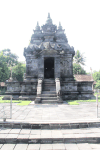

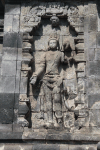

From the Prambanan entry in Wikipedia:
Candi Prambanan is a 9th century Hindu temple compound in Central Java, Indonesia, dedicated to the Trimurti, the expression of God as the Creator (Brahma), the Preserver (Vishnu) and the Destroyer (Shiva). The temple compound is located approximately 17 km (11 miles) northeast of the city of Yogyakarta on the boundary between Central Java and Yogyakarta provinces.
The Prambanan Temple Compounds, a UNESCO World Heritage Site, is the largest Hindu temple site in Indonesia, and one of the biggest in Southeast Asia. It is characterized by its tall and pointed architecture, typical of Hindu architecture, and by the towering 47 m (154 ft) high central building inside a large complex of individual temples. There are 240 temples in the compound, most of them small.
The three major temples are dedicated to Brahma (south), Shiva (center), and Vishnu (north). The Shiva temple has shrines for Durga, the consort of Shiva, Ganesha, son of Shiva, and Agastya. Agastya is a revered Vedic sage of Hinduism. Smaller temples east of each major one are dedicated to their vehicles: Hamsa the swan, vehicle of Brahma, Nandi the bull, vehicle of Shiva, and Garuda, a combination of man and eagle, the vehicle of Vishnu.

Map of the Prambanan Temple Complex (64k)
(By Gunawan Kartapranata - Own work, CC BY-SA 4.0, On WikiMedia)


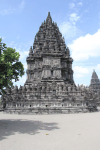
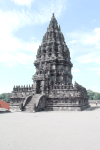
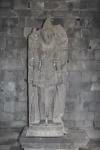
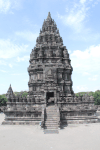

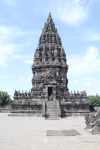

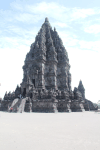
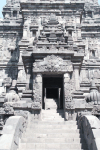
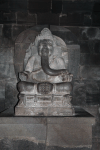
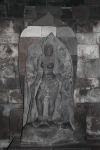
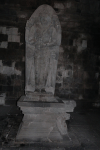
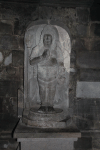
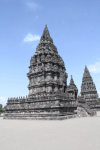

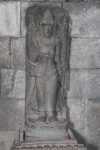
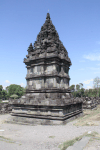

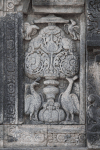
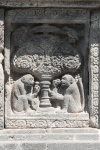







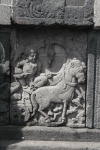
From the Sewu entry in Wikipedia:
Candi Sewu is an 8th century Mahayana Buddhist temple located 800 m (2,620 ft) north of Prambanan in Central Java, Indonesia. Candi Sewu is the second largest Buddhist temple complex in Indonesia (after Borobudur). Sewu predates the nearby "Loro Jonggrang" temple at Prambanan. Although the complex consists of 249 temples, this Javanese name translates to 'a thousand temples,' which originated from popular local folklore (The Legend of Loro Jonggrang). Archaeologists believe the original name for the temple compound to be Manjusrigrha.

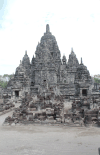
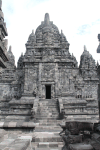
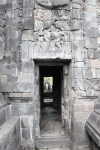


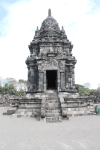
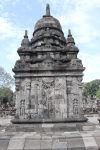

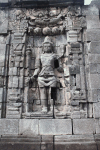


From the Keraton Ngayogyakarta Hadiningrat entry in Wikipedia:
Keraton of Yogyakarta (formally known as: Keraton Ngayogyakarta Hadiningrat) is a palace complex located in the city of Yogyakarta, Yogyakarta Special Region, Indonesia. The palace is the main seat Sultan of Yogyakarta and his family. It serves as a cultural center for the Javanese people and contains a museum that displays the sultanate's artifacts.
Yogyakarta Palace was built by Prince Mangkubumi in 1755-1756 (Javanese year: 1682), several months after the signing of the Treaty of Giyanti between Prince Mangkubumi of Yogyakarta, Hamengkubuwono of Surakarta and Dutch East India Company. A Banyan Forest was chosen as the site of the palace due to its location between two rivers which were considered good protection from possible flooding.
Most of the palace's current form are built by Sultan Hamengkubuwono VIII who reign from 1921 to 1939. It suffered from an earthquake in 1876 and 2006, and was subsequently rebuilt after the devastation.
The current Sultan is Hamengkubuwono X since 1988.




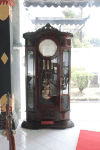




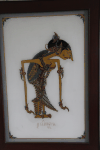
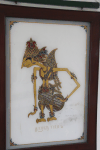


From the Taman Sari (Yogyakarta) entry in Wikipedia:
Taman Sari also known as Taman Sari Water Castle is a site of a former royal garden of the Sultanate of Yogyakarta. It is located about 2 km south within the grounds of the Keraton, Yogyakarta, Indonesia. Built in mid 18th century, the Taman Sari had multiple functions, such as a resting area, a workshop, a meditation area, a defense area, and a hiding place.
Taman Sari consisted of four distinct areas: a large artificial lake with islands and pavilions located in the west, a bathing complex in the center, a complex of pavilions and pools in the south, and a smaller lake in the east. Today only the central bathing complex is well preserved, while the other areas have been largely occupied by the Kampung Taman settlement.





The dance show was in one of the larger hotels. It included a dinner and a 1.5 hour show. It was quite interesting.

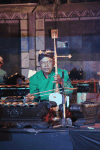


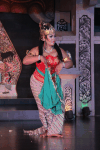
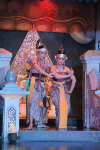
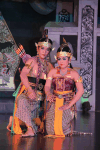





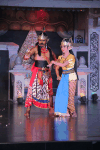

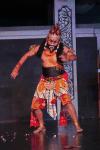













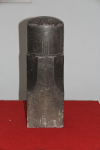

This page contains 137 pictures and 4 videos
Page last updated on Mon Jan 20 16:35:59 2020 (Mountain Standard Time)
Page last updated on Wed Apr 24 03:11:41 2024 (Mountain Standard Time)